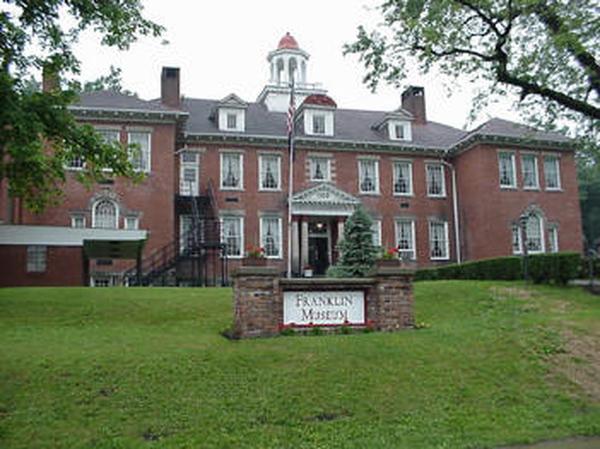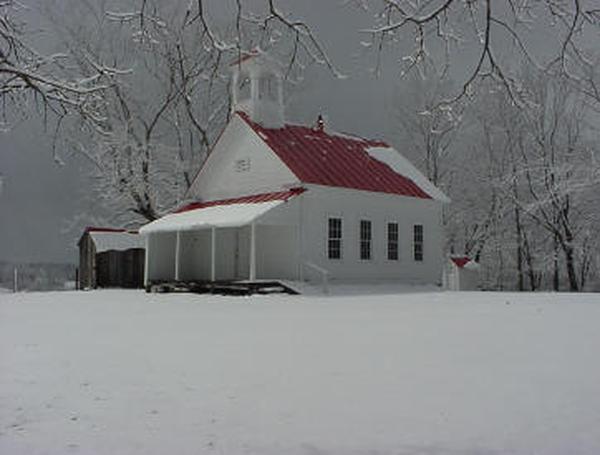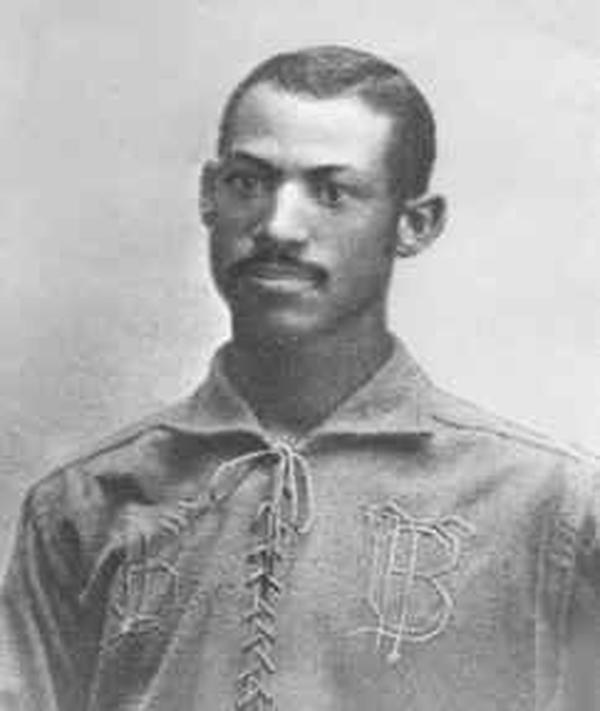Heritage and History
General George Armstrong Custer Birthplace
Born in New Rumley in northern Harrison County on December 5, 1839, George Armstrong Custer became one of the most controversial military leaders in our country's history. Following his graduation from West Point, Custer served the Union Army in the Civil War, rapidly rising in rank, attaining the rank of Brevet General. Following the war, he served throughout the west, meeting his death at the Battle of the Little Bighorn on June 25, 1876. A statue and historical markers are located in a park dedicated to Custer in New Rumley.
The Custer Memorial Association holds several events annually, including Custer days in June and a celebration of General Custer's birthday.
Clark Gable Birthplace and Museum
Clark Gable, the King of Hollywood, was born in Cadiz, the Harrison County seat. The Gable Foundation has acquired the site of Mr. Gable's birth and has reconstructed the home where he and his parents resided. The building is operated as a museum and gift shop. The exhibit includes many items of Gable memorabilia, including items donated by his fans. The collection has grown with the donation of a large collection of items belonging to his wife, actress Carol Lombard.
The foundation holds several events throughout the year, but the highlight is the annual birthday celebration held on the Friday and Saturday closest to February 1, Mr. Gable's birthday. Information is available at 740-942-GWTW or at the foundation's website at www.clarkgablefoundation.com.
Franklin Museum

Franklin College, located in new Athens, was a hotbed of abolitionist sentiment and teaching during the years leading up to the Civil War. Reverend John Walker, a Presbyterian minister and staunch abolitionist, founded Alma College in 1818, and changed the name to Franklin College in 1826. In 1919 the college became a part of Muskingum College, located in nearby New Concord.
Walker and his faculty taught the abolitionist doctrine and many of the graduates carried the message forward in their careers as ministers, teachers, or attorneys. Graduates of this small institution included eight United States Senators, nine Members of Congress, several governors, and twenty state legislators.
Titus Basfield, a former slave and one of the first African Americans to graduate from college in Ohio, was a Franklin College graduate. His classmate and friend, John A. Bingham, went on to become a Member of Congress and served as Floor Manager for the legislation that gave rise to the Fourteenth Amendment to the United States Constitution. Correspondence from Congressman Bingham to Reverend Basfield states that the Congressman ensured the inclusion of the Equal Protection Clause with Reverend Basfield and his family in mind. This clause is the basis for much of the civil rights progress achieved in this country over the past century and a half.
Franklin Museum is staffed by volunteers and open during limited hours and by appointment at other times. Please call 740-968-1042 or 740-968-4066. Additional information is available on the Franklin Museum website at http://www.harrisoncountyohio.org/franklinmuseum/
History of Coal Museum
Late in the 19th Century, Harrison County's agricultural economy was forever changed by the discovery of large deposits of coal beneath the earth's surface. The next century was a booming time for the region, as coal was extracted from underground mines and from strip mining operations, where the earth is removed from the coal, enabling the reserves to be extracted at the surface.
The History of Coal Museum provides exhibits explaining and detailing the mining processes and the many uses of the coal extracted from the ground. During this time, many immigrants from Europe came to the area to work in the mines, and the museum highlights the rich cultural heritage which they brought to the area. Photographs of mining operations fill the walls, and there is a large collection of equipment used in the mines.
The museum is located on the lower level of the Puskarich Public Library, at 200 East Market Street in Cadiz. More information is available by calling 740-942-2623 or by visiting the website at www.harrisoncountyohio.org/coalmuseum/
Mining and Reclamation Museum
Coal mining requires large machinery, especially in surface mining operations. The Mining and Reclamation Museum is an open air exhibit which features mining equipment, as well as detailed information on the surface mining process. The exhibit offers an interesting glimpse into coal mining operations and is a major attraction for children interested in earth moving and construction equipment.
The museum committee is hopeful that it will be able to raise funds sufficient to purchase the Silver Spade when its mining operations cease in the next few years. The Silver Spade is the last of the giant earth moving shovels mining coal in eastern Ohio. "The Spade" as it is known locally, currently is mining in the southern portion of Harrison County. If successful in its efforts to acquire the shovel, it will become the centerpiece of the outdoor mining museum.
Ourant School

Built in 1873, Ourant School is a one room school house which was renovated a few years ago, as a joint effort led by local residents and coordinated by Crossroads Resource Conservation and Development District.
Several events are held at the school annually, including a cake walk and a reunion. But the highlight of the year takes place in the spring, when each of the second grade classes from the various Harrison Hills elementary schools spends a day as students in a one room school house.
Ourant School is located on Route 328 in Nottingham Township, east of Deersville.
Scio Historical Museum
The Scio Historical Museum, a vintage, yellow brick home on Main and Carrollton Streets in the center of the village is maintained and sponsored by the Scio Development Committee, Inc., a non-profit community improvement organization. The museum houses collections and memorabilia from the 1889 oil boom, Scio College, Scio Pottery, Scio High School, and Scio American Legion. A collection of first edition books on General George Custer is displayed along with other Custer pictures and various Civil War items. Upstairs rooms featuring vintage clothing, village flags, banners, and quilts recently have been opened.
The museum is open to the public at no charge on the fourth Sunday of each month from May to September. It also is open during the four day Fall Festival each August. The museum can been seen at other times by appointment by calling 740-945-2172 or 740-945-5561.
Visit www.harrisoncountyohio.org/sciomuseum / for more information.
Edwin M. Stanton
Born in nearby Steubenville, Edwin M. Stanton served as Harrison County Prosecutor, practiced law in Cadiz, and taught law at Franklin College in New Athens. Stanton later served as United States Attorney General and was best known for his service as President Lincoln's Secretary of War during the Civil War. He later was appointed to the United States Supreme Court, but died before he could serve on the bench.
John A. Bingham
John A. Bingham was an attorney and Congressman who served as one of the prosecutors of Lincoln's assassins. Congressman Bingham served as Floor Manager in the House of Representatives for the legislation which gave rise to the Fourteenth Amendment to the United States Constitution.
General Thomas Vincent
Harrison County resident General Thomas Vincent served as a coordinator of the recruitment efforts of the Union Army during the Civil War. General Vincent attended to President Lincoln on his deathbed.
Bishop Mathew Simpson
Bishop Mathew Simpson served as President Lincoln's spiritual advisor. A bishop in the Methodist Church, he gave the funeral oration at President Lincoln's entombment in Springfield, Illinois. Bishop Simpson, a Harrison County native, is reported to have strongly influenced President Lincoln's decision to issue the Emancipation Proclamation.
Thomas Custer
Thomas Custer, brother of General George Armstrong Custer, served and died at his brother's side. He is one of fewer than two dozen individuals to receive the Congressional Medal of honor twice.
Moses Fleetwood Walker

Moses Fleetwood ("Fleet") Walker was born in 1857, the son of parents of mixed race, which automatically classified him as "African American" for legal and social purposes. His father was a blacksmith in Mt. Pleasant who later moved to Steubenville, trained as a physician, and became a respected practitioner. After practicing in Steubenville for a number of years, Dr. Walker became a minister and moved his family to Oberlin, Ohio, which enabled his sons Moses and Weldy to attend Oberlin College, one of the few institutions of higher education at the time which admitted African American students. The Walker brothers excelled at baseball and played on the college baseball team while attending Oberlin College.
In 1883, Fleet Walker played baseball professionally with the Toledo Blue Stockings (forerunner of the Mud Hens), in order to make money to pay for his law school tuition at the University of Michigan. In 1884, the Blue Stockings joined the Major League sanctioned American Association, making Mr. Walker the first African American to play in the Major Leagues. Mr. Walker played until 1889, for teams in Cleveland, Waterbury, Syracuse, and Newark. Several other African Americans, including Fleet Walker's brother, Weldy, played Major League baseball during this time frame, in the face of mounting sentiment that Major League baseball should be open only to white players. By 1889, Fleet Walker was the only remaining African American Major League player. When he left the game during that season, an unwritten agreement among owners and players resulted in an absence of African American players in the Major Leagues until Jackie Robinson broke the "color line" in 1947.
Following his baseball career, Mr. Walker lived in Syracuse, Cleveland, and Steubenville, where he worked as a postal clerk and as a hotel operator. He also became an inventor and received patents for an exploding artillery shell in 1891. Mr. Walker and his brother Weldy published The Equator, a newspaper dedicated to African American issues and causes while residing in Steubenville in the first few years of the Twentieth Century.
Fleet Walker and his wife Ednah moved to Cadiz in 1904. They took over operation of an opera house which was located in the building which still stands today in the 100 block of West Market Street, across from the Harrison County Courthouse. They resided in an apartment on the upper floors of the building.
In 1920 Ednah Walker passed away, and in 1922 Mr. Walker sold the opera house and moved to Cleveland, where he resided until his death on May 11, 1924. Moses Fleetwood Walker is buried in Union Cemetery, Steubenville, Ohio.
Delaney House
Located in Hopedale, Delaney House is a farm homestead which is documented to have served as a "stop" on the Underground Railroad. The building contains a dry cistern, which is connected to the main house by a tunnel. The cistern served as a hiding place for runaway slaves, and the tunnel provided access from the main house without the need to go above ground and risk capture. Given eastern Ohio's proximity to the Ohio River and local Quaker and Presbyterian influences, this region was an important stop on the route to freedom.
Delaney House was purchased several years ago by a local resident. Members of the Friends of Freedom are dedicated to the preservation of Delaney House.
Civil War in Eastern Ohio
When we consider Civil War history, we immediately think of the battlefields of the south, or possibly Gettysburg. Most people do not consider the vast body of Civil War history in eastern Ohio. An effort is underway to inventory this legacy and publicize the points of historic interest in Harrison County and the other eastern Ohio counties of Jefferson, Carroll, Columbiana, and Belmont.
Nearly two dozen sites and points of interest have been identified in the five county area; perfect for a day or two of exploring the importance of eastern Ohio in the Civil War. Harrison County sites include Franklin Museum, General Custer birthplace and monument, Morgan's Raid route, and the walking tour of Cadiz, which includes sites related to former residents Edwin M. Stanton (Lincoln's Secretary of War), John A. Bingham (Prosecutor of Lincoln's assassins), Bishop Mathew Simpson (Lincoln's spiritual advisor), and General Thomas Vincent (coordinated Union Army recruitment efforts and attended to Lincoln on his deathbed).
Morgan's Raid Trail
In July 1863, Confederate John Hunt Morgan led the deepest incursion into Union territory during the Civil War. Morgan's raid followed a route through the southern tier of Harrison County. Morgan and his men entered the county near Smyrna and traveled through Moorefield and Harrisville in their search for a point where they could cross the Ohio River and escape their pursuers. Morgan was captured near East Liverpool, in Columbiana County, ending a ride which began in Tennessee.
Funding has been secured to establish Morgan's Raid Trail, a driving tour which follows the route of General Morgan from Tennessee to his capture in Ohio. Several markers will be erected in Harrison County as a part of this effort.
Harrison County Historical Society
The Harrison County Historical Society serves as a resource on the history of Cadiz and Harrison County. Displays include local artifacts, photographs, and historical accounts of the area.
The Society is located at 136 S Main Street, Cadiz. Please call 740-942-3900 for information or Click Here to visit their website.
Harrison County Genealogical Society
Many Harrison County residents take a keen interest in their genealogical heritage, with many of the families who settled the area two centuries ago still present in the community. The Harrison County Genealogical Society provide excellent resources for researching your family history and also provides programs to teach the skills required for conducting research.
The Society is located on the second floor of the Historical Society building, at 168 East Market Street in Cadiz.
Historic Markers
Numerous historical markers are situated throughout Harrison County. They identify important sites related to the county's industry, favorite sons, and events of importance. Please check this site for an update, including images of Harrison County markers.
Proudest Small Town in America
In 1938, Cadiz was proclaimed "The Proudest Small Town in America." A monument on the grounds of the Harrison County Courthouse commemorates the designation.
Tappan-Moravian Trail Ohio Scenic Byway
The Tappan-Moravian Trail Ohio Scenic Byway is a designated route passing through the lake region and northern portions of the county. The route loops around Tappan Lake, passing through Deersville and Feed Springs, where two historic markers were installed recently. From the Tappan Lake area one branch of the byway follows Route 21 and Route 799 through the Clendening Lake region. Another branch follows Route 646 to Scio and New Rumley, before following Route 9 to Jewett and Route 151 back to Scio.
For more information visit any of the following:
http://www.byways.org/TappanMoravian.html
